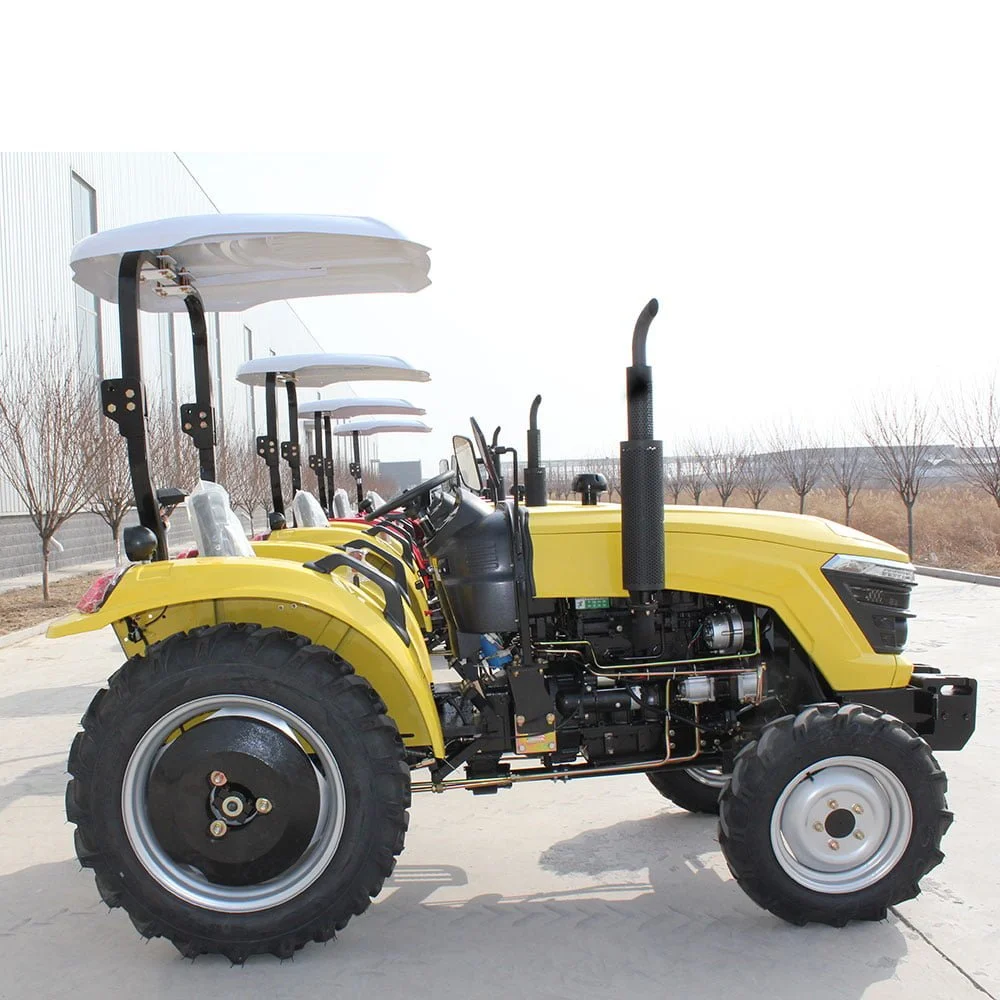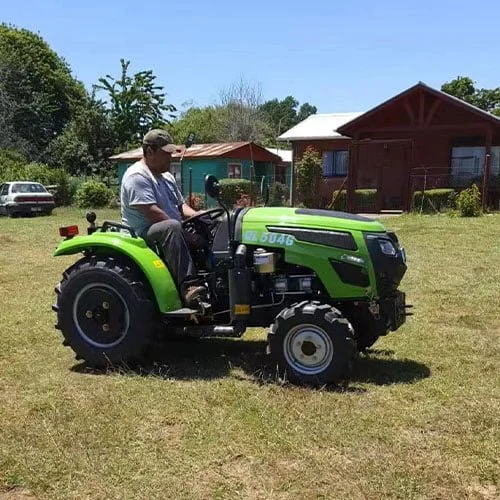Email: [email protected] Whatsapp: 8618266768780
How Tractor Body Design Impacts Performance
Welcome to My Blog!
Before we dive into the content, I’d love for you to join me on my social media platforms where I share more insights, engage with the community, and post updates. Here’s how you can connect with me:
Facebook: https://www.facebook.com/profile.php?id=100072217509763
LinkedIn: https://www.linkedin.com/company/74949059/admin/dashboard/
YouTube:https://www.youtube.com/@tractormanufacturer-lc5qz
TikTok: https://www.tiktok.com/@tractormanufacturer
Now, let’s get started on our journey together. I hope you find the content here insightful, engaging, and valuable.
Introduction

When you invest in or use a tractor, it’s easy to focus on engine specs, horsepower or hydraulics. But there’s one factor that’s often overlooked: the tractor body. The styling, balance and construction of a tractor can affect everything—from fuel efficiency to maneuverability in the field.
This article takes a deep dive into how tractor body design affects performance, covering both the fundamentals and the subtleties that can change your experience.
The Role of Aerodynamics and Structural Integrity in Tractor Body Design
Unlike road vehicles, tractors operate in complex terrain and under immense stress. So why care about aerodynamics?
While not about speed, aerodynamic efficiency reduces drag and allows the engine to perform with less strain, especially during long hours in open fields. Tractor body design that considers airflow can help with cooling systems, minimize debris accumulation, and reduce wear over time.
Additionally, the structural integrity of the body impacts safety and durability. Materials used in the body frame—like reinforced steel or high-strength polymers—must strike the right balance between lightweight construction and robust performance. According to a 2023 study published by the International Journal of Agricultural Machinery, tractors with optimized body structure reported 12% less frame fatigue over three years of testing.
Ergonomics and Operator Comfort: More Than Just a Cab
When we talk about performance, we often forget the human factor. A well-designed tractor body considers operator comfort as a core part of the vehicle’s overall effectiveness.
Ergonomics isn’t a luxury—it’s a performance metric. A well-positioned cabin, intuitive control layout, and minimal vibration through body structure lead to longer, more productive working hours with fewer errors or physical strain.
For instance:
- A high-mounted, centrally located cab offers better visibility, which means fewer passes in the field.
- Low-step entries and shock-absorbing seat mounts directly tie into the body design and reduce operator fatigue.
Think about scenarios like orchard work or narrow-row cultivation. Here, body compactness and visibility play a vital role in both safety and efficiency.
How Tractor Body Design Influences Field Versatility and Tool Integration

Different fields demand different forms. Flat, wide cropland isn’t the same as hilly, narrow vineyards or mud-prone terrains. That’s why modern tractor body design is increasingly specialized.
One of the key performance metrics is tool compatibility. A tractor that can easily attach and support a range of implements—plows, harrows, sprayers, or loaders—is far more valuable. And that versatility starts with body design:
- Mounting point placements
- Chassis width
- Ground clearance
All are affected by how the body is constructed. Let’s take a closer look with the table below.
Comparison of Tractor Body Features and Their Field Impacts
| Tractor Body Feature | Design Detail | Field Impact |
|---|---|---|
| Chassis Width | Narrow (under 1.5m) | Better in vineyards, tighter turns, less soil disturbance |
| Ground Clearance | Adjustable/High (45–65cm) | Suited for row crops, reduces crop damage |
| Weight Distribution | 50/50 front-back split | Improved traction, especially on inclines |
| Mounting System Position | Mid-rear hydraulic lift | Easier tool attachment and detachment |
| Hood Shape | Sloped, contoured with vent channels | Improved visibility and engine cooling |
| Step Height and Entry Angle | Low with wide angle (less than 30 degrees) | Increases accessibility and reduces operator fatigue |
Design isn’t just aesthetic—it’s strategic. As field needs evolve, tractors with adaptable bodies perform better across tasks.
Durability, Maintenance, and Longevity: Built to Withstand Time

Tractors are long-term investments, and their body design significantly influences maintenance cycles and lifespan.
Here’s what to watch:
- Enclosed vs. exposed components: Tractors with well-integrated body panels shield vital systems like the drivetrain and cooling units from debris and corrosion.
- Bolt-on vs. welded structures: Modular, bolt-on body panels are easier to replace and repair.
- Drainage design and water channels: Preventing water buildup can mean the difference between a 5-year and a 15-year lifespan.
Real-world feedback shows that body design can reduce repair frequency by up to 18%, based on field trials conducted by AgriTech Research Labs across 50 mixed-use farms in 2022.
Sustainability and Energy Efficiency: The Hidden Contribution of the Tractor Body

Sustainability is not just about fuel anymore. A modern tractor body supports:
- Material recycling at end-of-life
- Lightweight frames that reduce soil compaction and fuel usage
- Body designs that support electric or hybrid drivetrain integrations
As more operations shift toward greener goals, tractors with future-ready body structures are leading the way. It’s not just about what the body is made of, but what it enables.
Conclusion
Your tractor’s body isn’t just a shell—it’s the backbone of performance. From comfort to compatibility, fuel efficiency to field success, every line and angle of the tractor body plays a role.
If you’re choosing a tractor or optimizing your fleet, pay close attention to body design. It tells you more about potential performance than you might expect.
Next time you step into a cab, take a look around. Is your tractor body working with you or against you?
FAQ
Does a heavier tractor body mean better performance?
Not always. While weight can aid traction, excessive bulk may lead to soil compaction and reduced maneuverability. Balance is key.
Can the body design affect fuel efficiency?
Yes. Aerodynamic shaping, material weight, and airflow management all influence engine efficiency, especially in extended use.
What’s the ideal tractor body design for hilly terrain?
A compact frame with a low center of gravity, high ground clearance, and balanced weight distribution performs best on inclines and slopes.
How often should body components be inspected?
You should check key body elements (mount points, seals, panels) at least every 200 working hours or seasonally, whichever comes first.
Are body modifications safe or advisable?
Only if done by certified technicians. Altering the structure can affect load balance, implement compatibility, and warranty conditions.
About Us
Shandong Qilu Industrial Co., Ltd. is a professional manufacturer and exporter integrating the development and production of excavators, loaders and tractors. We provide the best service, absolutely.
Recent Posts
Video demo
-1.png)
Contact Us Today!
Any question, quote or inquiry? Click the button to send message.
Qilu Industrial will always here to help.
